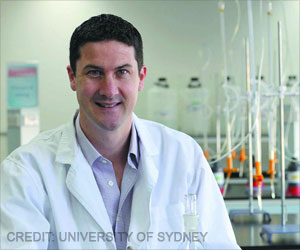- Antimicrobial resistance could be a worldwide health threat.
- Antibacterial compound chitosan formed from the shells of crustaceans like shrimps could help to improve people’s lives.
- Chitosan is combined with the hydrogel dressings by a technique called irradiation.
According to the WHO, around 480,000 people may develop multi-drug resistant tuberculosis every year. Drug resistance may also complicate treatment against malaria and HIV.
Innovative Protective Dressing
Dr. Radoslaw Wach and his colleagues from the Lodz University of Technology in Poland developed a protective dressing. The innovation was based on providing some moisture to the wound, and speeding up the aspect of healing and cooling down.
The hydrogel dressings are durable and could easily adapt to the shape of the affected body part.
This technique was adapted to make a version of the classic dressing. The research team could incorporate an antibacterial and biodegradable substance called chitosan, which is extracted from the crustacean shells, within the dressing itself.
The extraction process involves the isolation of chitin from the shells and then changing the structure by removing the chemical branches from the acetyl groups.
Chitosan compound has to be purified before its use. It is also useful in bandages to stop bleeding and is well known for its antimicrobial properties.
The research team next allowed an electron beam at the polymer containing chitosan solution from a substance called lactic acid while making the dressings. This could actually allow the chitosan to become part of the dressing itself.
Dr. Wach, said, "We developed a composition where chitosan is dissolved in lactic acid and, when added to the regular composition of the dressing, it does not adversely change its ability to cross-link during manufacturing or alter its mechanical and functional properties."
"The new hydrogel wound dressing is biologically active."
The new dressings can also be used as a replacement for classic hydrogels.
Dr. Wach said, "Since wound healing in severe cases may take a long time -- up to several weeks -- the probability of bacteria-mediated infection is high."
"Our novel hydrogel dressing could, therefore, prevent many such infections and avoid serious complications."
The World Health Organization (WHO) has also published a new list of bacteria for which a number of antibiotics are needed. The critical group also included bacteria resistant to multiple drugs. This could pose a particular threat in hospitals, nursing homes and other patients who many require devices such as ventilators and blood catheters.
The list may include bacteria called Acinetobacter, Pseudomonas and Enterobacteriaceae which includes Klebsiella, E.coli, Serratia and Proteus.
Dr. Wach concluded that, "If our solution is commercialized, tens of thousands of infections could be prevented each year."
Antimicrobial Resistance
Antimicrobial agents have been used for the past 70 years to treat infectious diseases. These drugs may also reduce illness and death from other infectious diseases.
In the United States alone, around 2 million people become infected with bacteria that are resistant to antibiotics. Around 23,000 people may die every year as a result of infections.
How to Fight Antimicrobial Resistance
- Avoid infections and prevent the spread of drug-resistant infections.
- Change the way of prescribing the antibiotics to effectively slow down the development and spread of antibiotic-resistant infections.
- New drugs and diagnostic tests should be slowly developed to keep up with the resistant bacteria.
- Wiktoria Mozalewska, Renata Czechowska-Biskup, Alicja K. Olejnik, Radoslaw A. Wach, Piotr Ulański, Janusz M. Rosiak. Chitosan-containing hydrogel wound dressings prepared by radiation technique. Radiation Physics and Chemistry, 2017; 134: 1 DOI: 10.1016/j.radphyschem.2017.01.003
- Antibiotic / Antimicrobial Resistance - (https://www.cdc.gov/drugresistance/)
Source-Medindia












